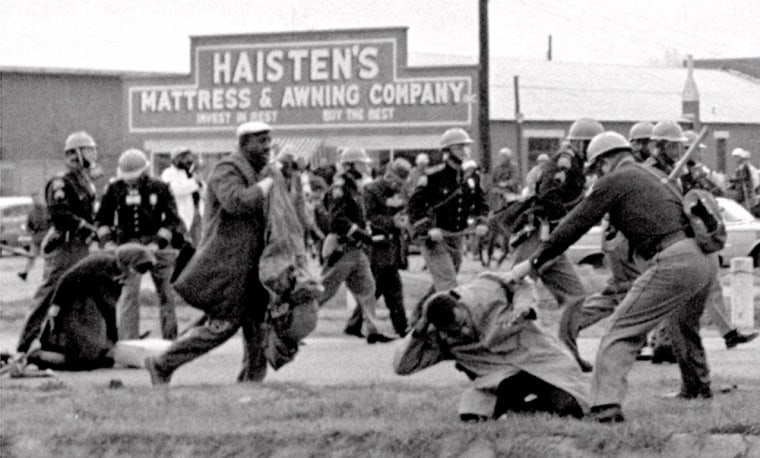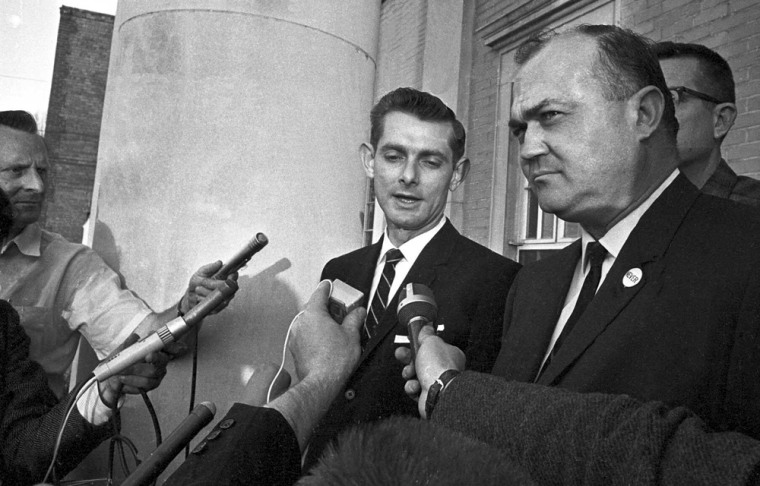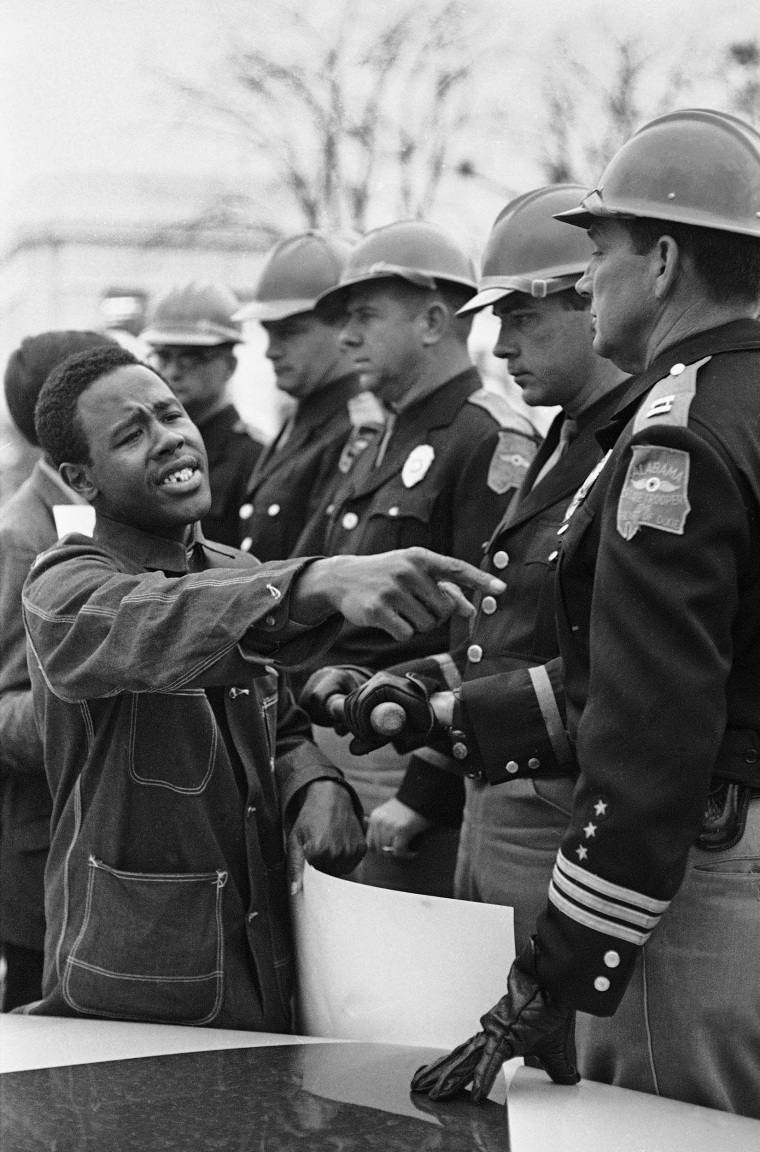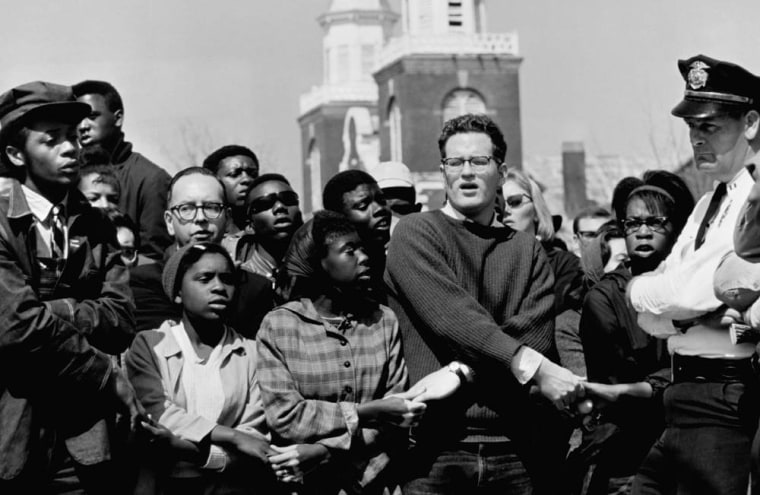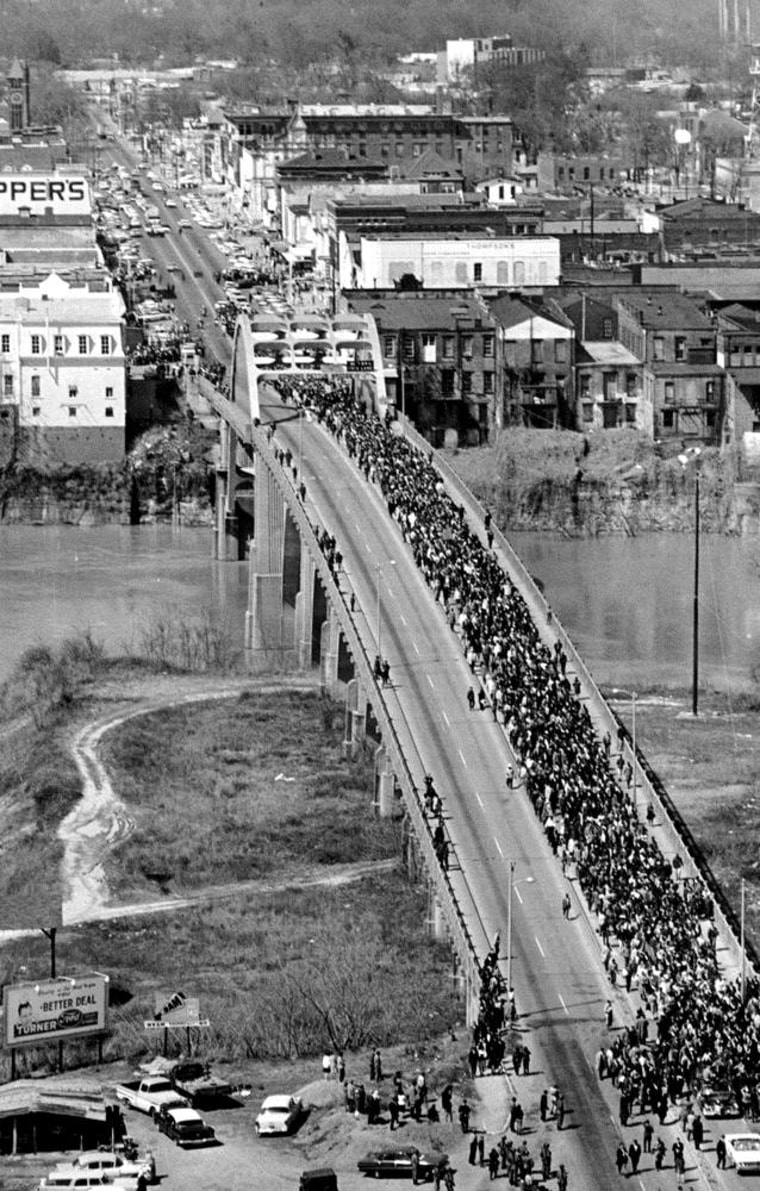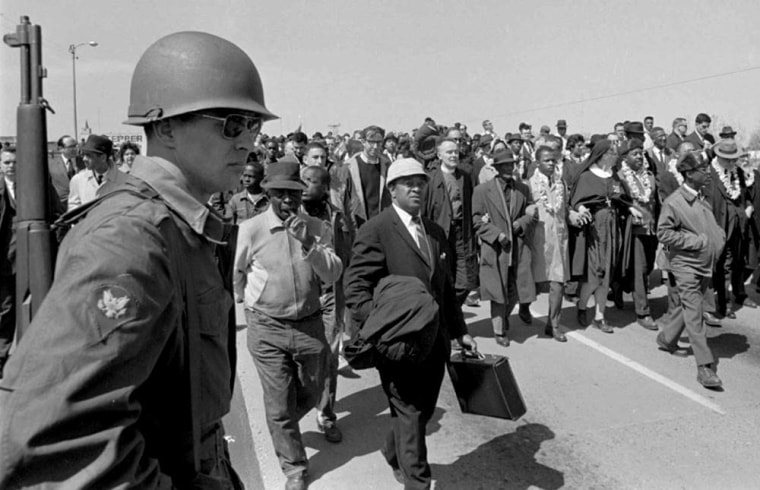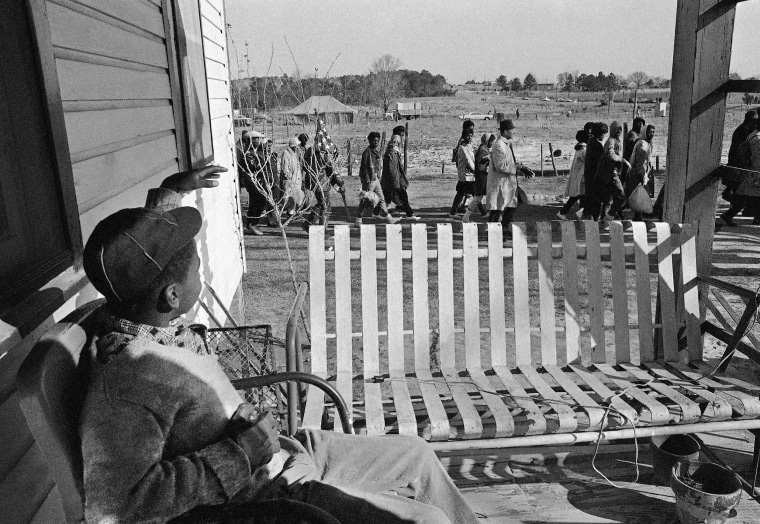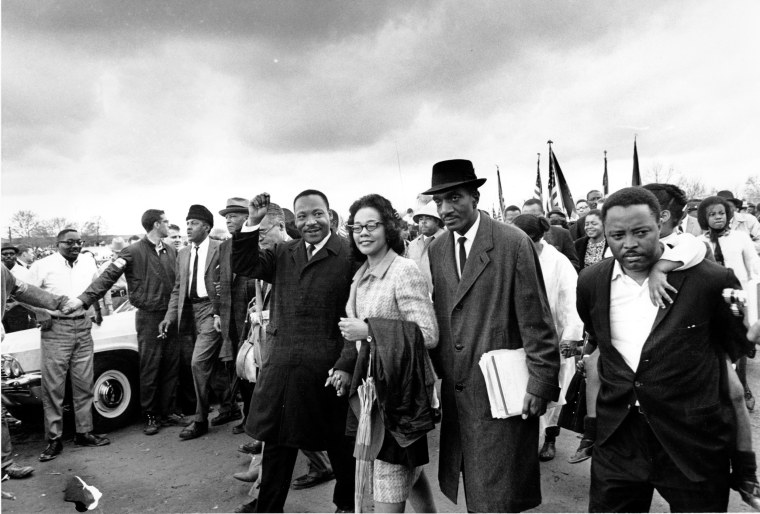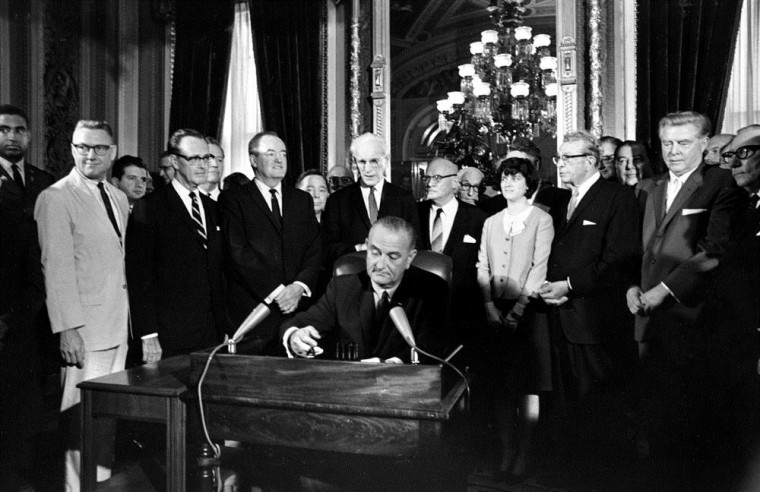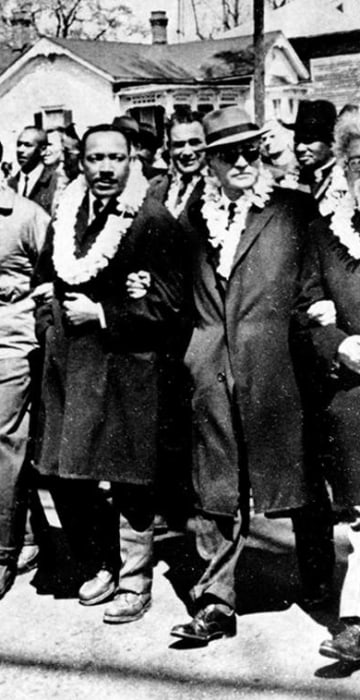
In Focus
The fight for the right to vote
Martin Luther King, Jr. led black voters from Selma to Montgomery in an effort to register, facing opposition and violence along the way.
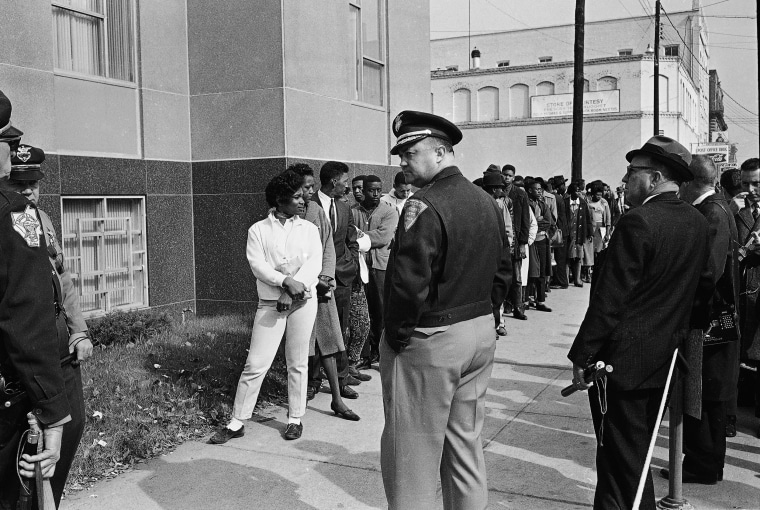
Sheriff Jim Clark, Dallas County Selma, Alabama, stands in front of a group of African-Americans lined up at a side door of the Dallas County Court House in Selma on Jan. 21, 1965, as they drive to boost their voting strength from the present 300 to a 15,000 maximum and face arrest in the process.
Sheriff Clark and his posse men have become a symbol of resistance to the African-American community, with clubs and electric cattle prods. The African-Americans have been arrested by Clark, when they refuse to use an alley entrance to the court house.
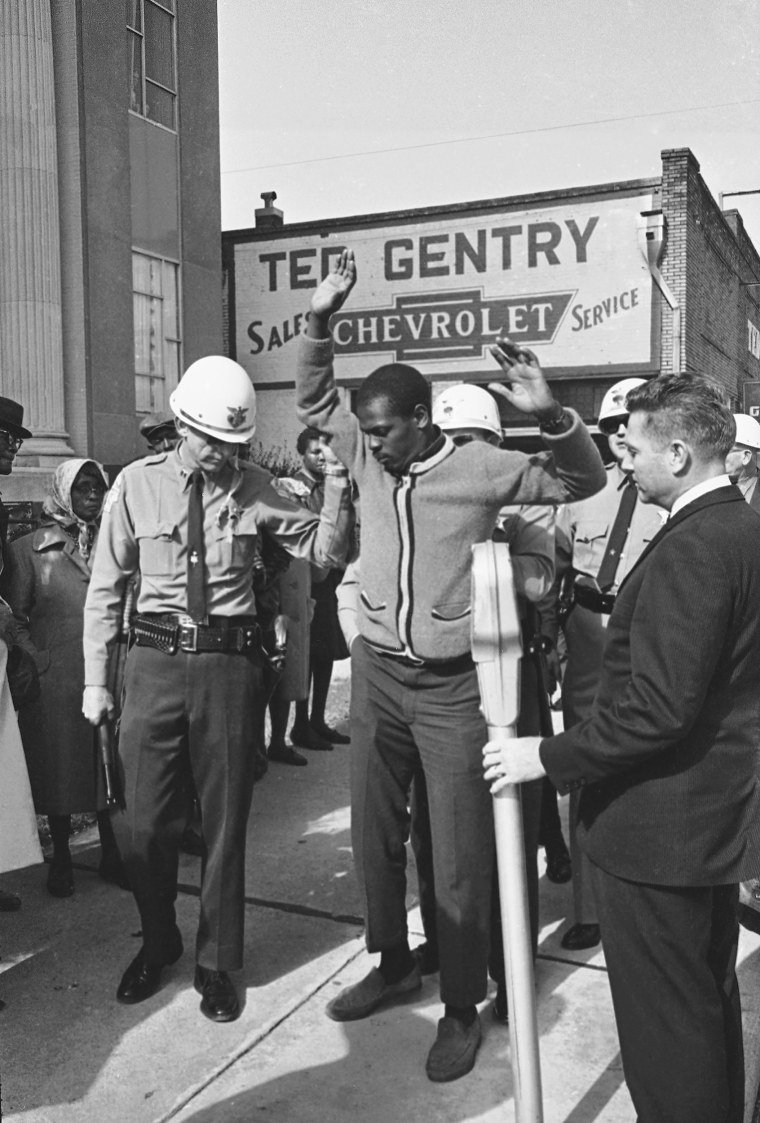
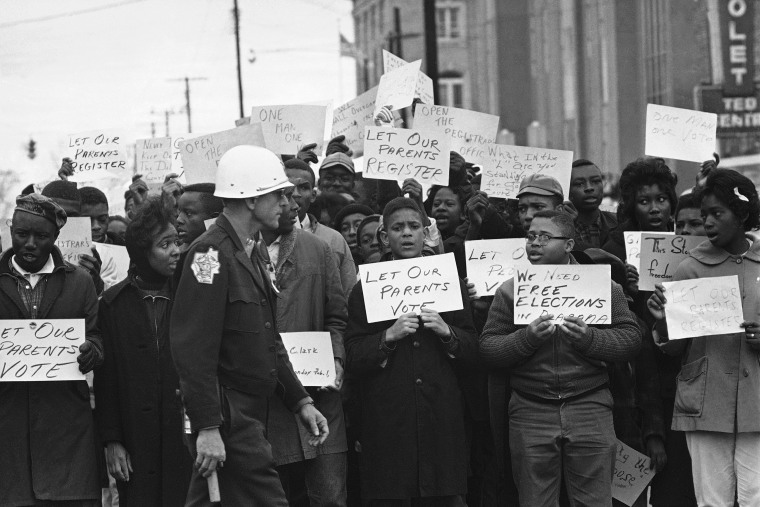
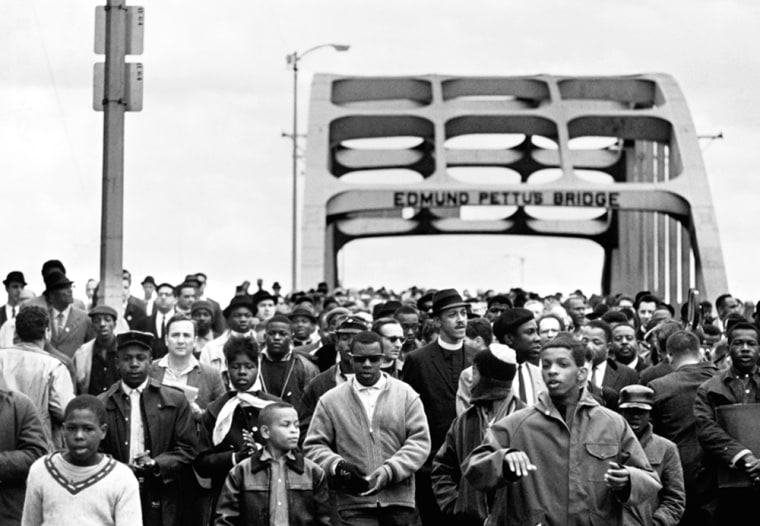
Civil rights activists march across the Edmund Pettus Bridge in Selma, on March 7, on their way to Montgomery, the state capital. They're demanding voter registration rights for blacks, who are discouraged and many times threatened with violence if they try to vote, particularly in small towns in the South.
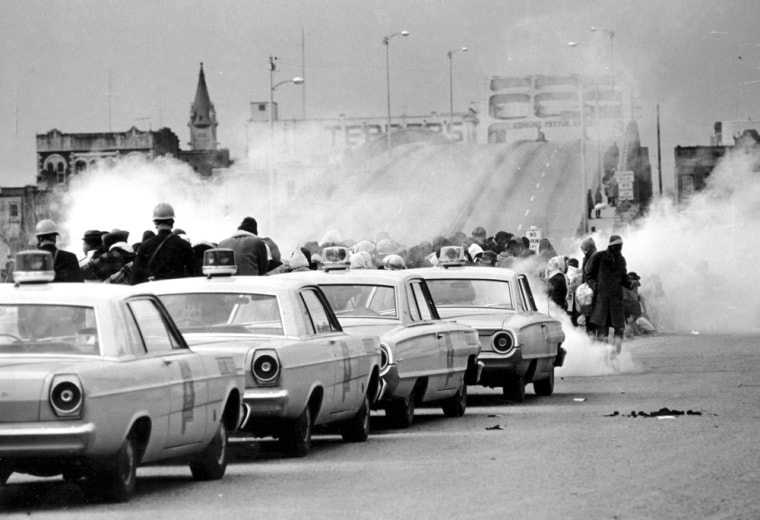
Tear gas fills the air as state troopers, on orders from Gov. George Wallace, break up the march.
March 7 becomes known as Bloody Sunday after state troopers assault the marchers with clubs and whips. A shocked nation watches the police brutality on television and demands that Washington intervene and protect voter registration rights for blacks.

